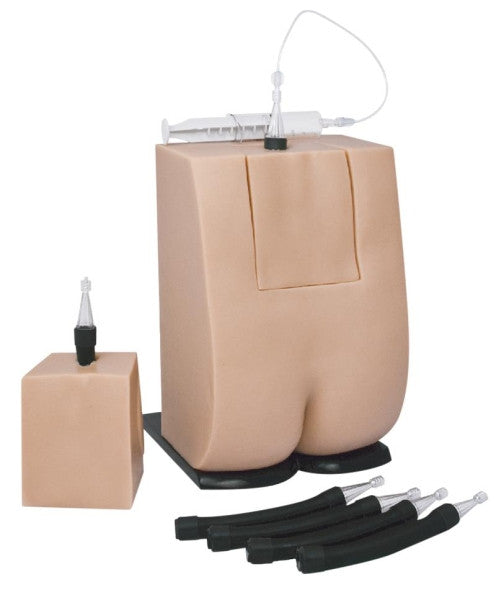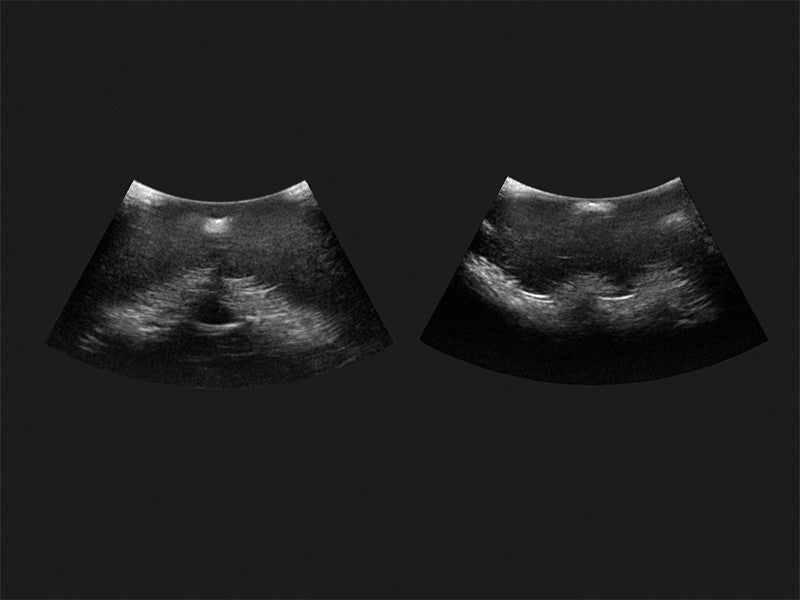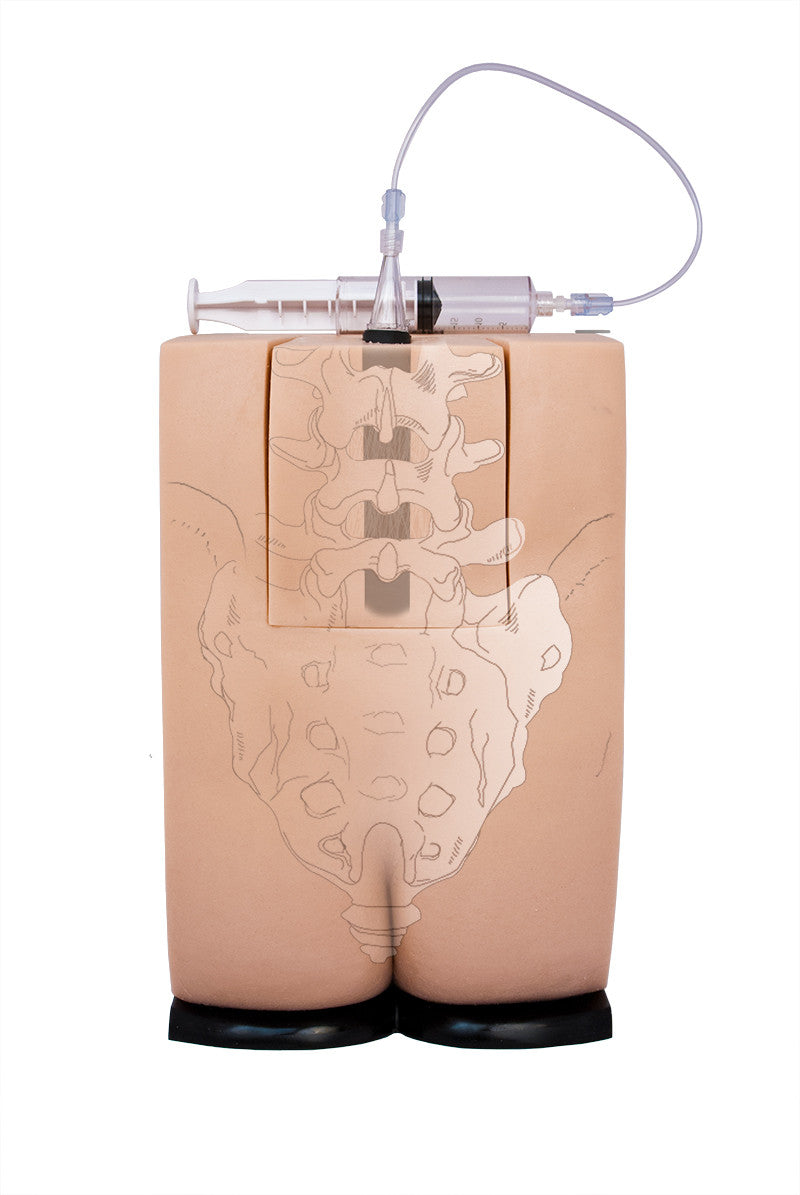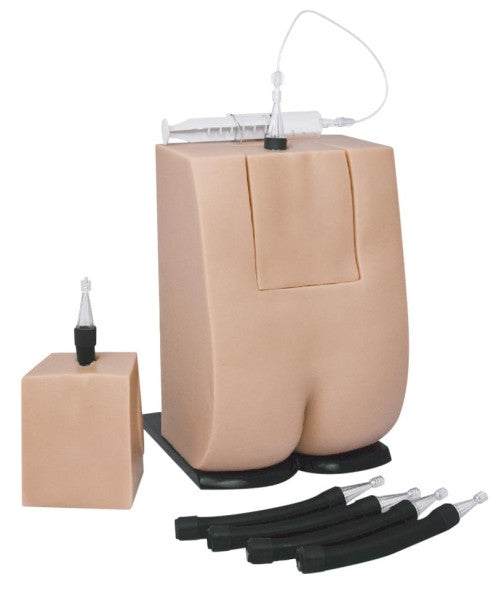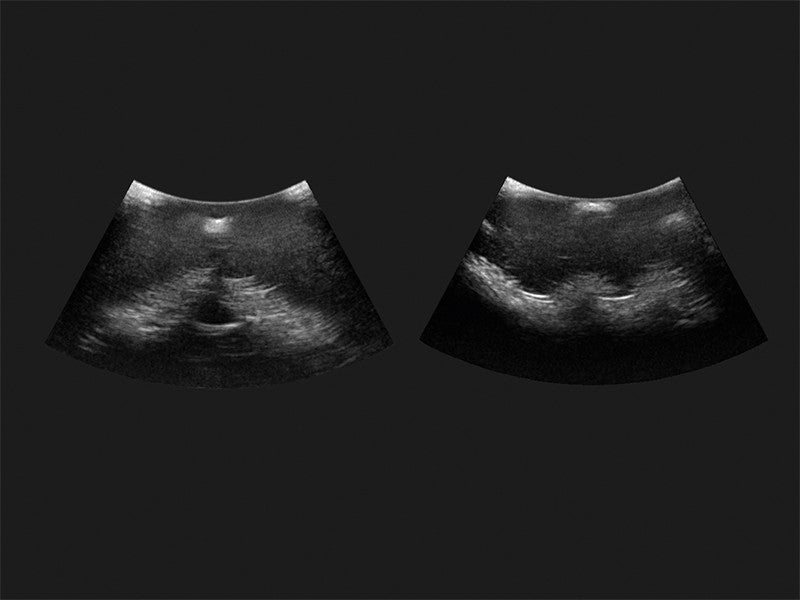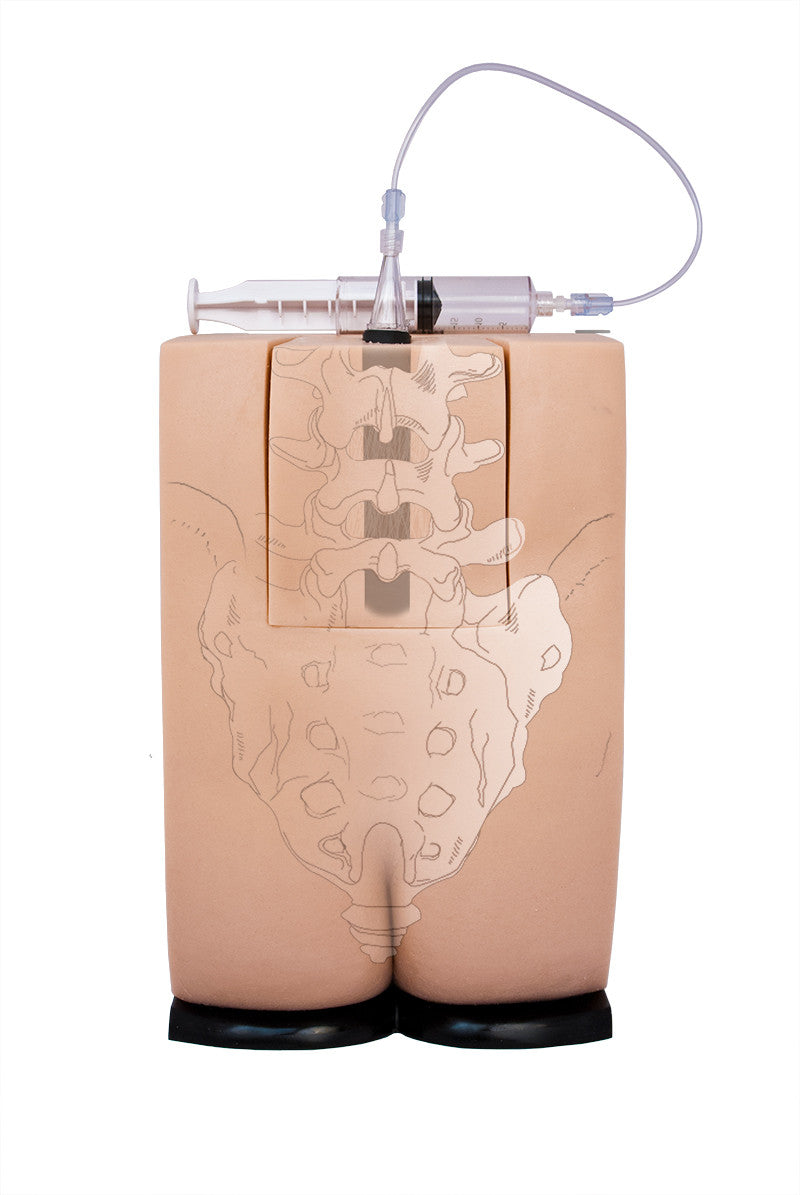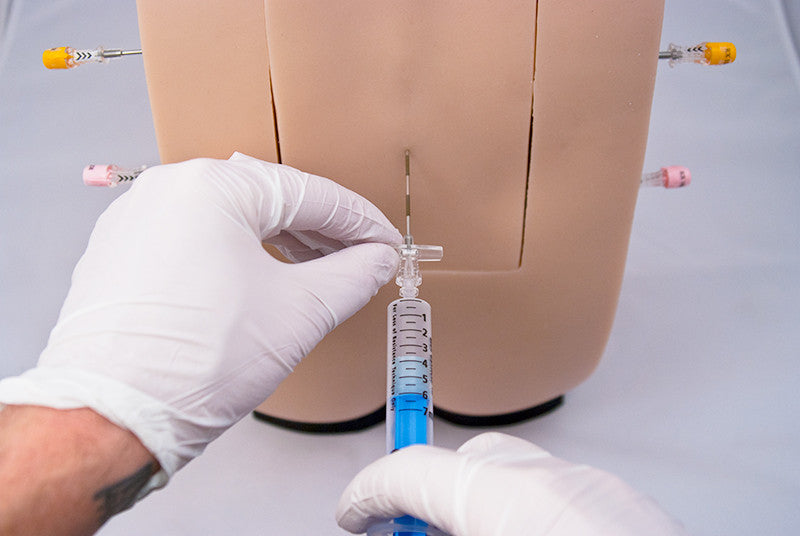Introducing the Epidural-Spinal Injection Simulator GENESIS, the ultimate training tool for mastering techniques associated with prevalent neuroaxial blocks. This is a valuable asset for the education and hands-on training of medical students.
The anatomical precision of the model s lumbar region allows for a realistic dural puncture experience, closely resembling the procedure performed on human patients. Due to the accurate loss of resistance and presence of fluid in the intrathecal space, users can effectively identify precise target locations.
The model s fundamental anatomical characteristics include:
- Spinal space ?? Employs fluid-filled tubing to replicate the dural click and confirm the presence of cerebrospinal fluid.
- Epidural space ?? Facilitates the simulated loss of resistance technique.
- Vertebral bodies ?? Allow identification of interspaces through visible and palpable spinous processes.
- Ligamentum flavum ?? Exhibits realistic tactile sensations due to its tough and gritty texture.
- Iliac crest ?? Serves as a standardised reference for locating the L4 spinous process.
With this simulator, users can practice a range of procedures, such as:
- Epidural loss of resistance ?? Developing proficiency in identifying epidural loss of resistance.
- Lumbar puncture ?? Accurate confirmation of spinal placement through fluid indication.
- Catheter placement ?? Successful insertion of epidural and spinal catheters.
- Combined spinal-epidural technique ?? Optimal for mastering the combined technique.
- Ultrasound compatibility ?? Increasing proficiency in ultrasound techniques.
Overall, the Epidural-Spinal Injection Simulator GENESIS is a versatile simulation tool that empowers healthcare students to achieve a high level of competency in spinal injections.


